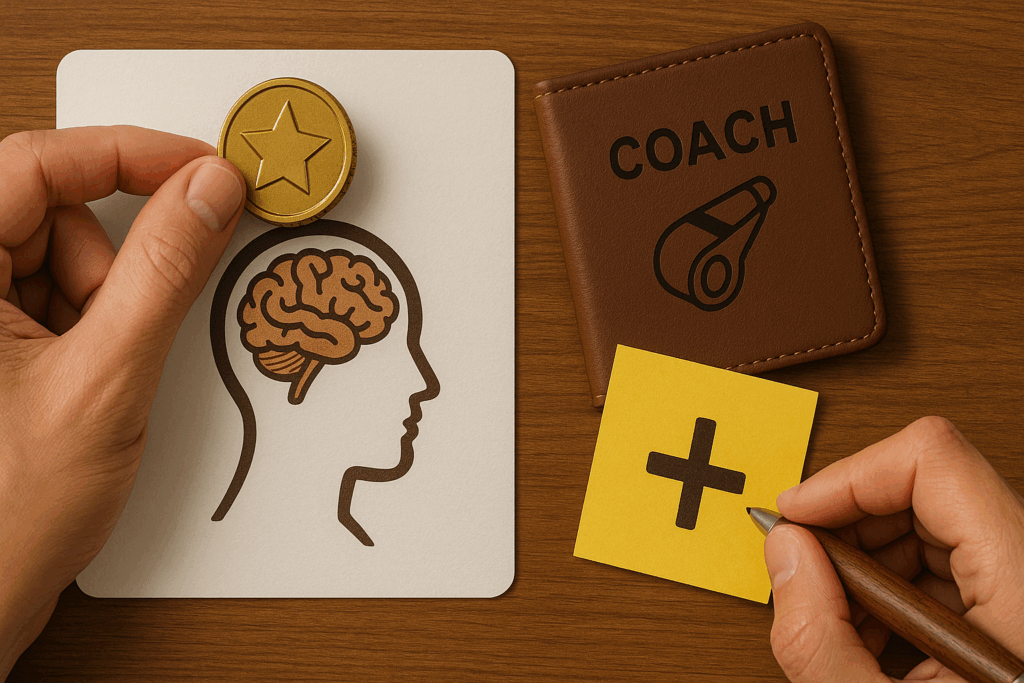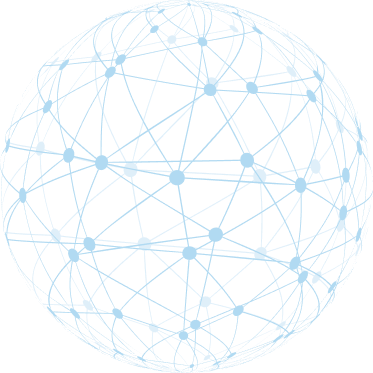Jason lit up when we talked about the team win. Not because it meant hitting quota. Not even because of the recognition he received from leadership. It was the lookon his team’s faces—the pride, the momentum, the belief that they could do it again.
“You know what’s weird?” he said. “I didn’t think I needed praise. But now I want to build on it.”
That moment wasn’t just motivational—it was neurological.
What Jason experienced was his brain’s reward systemat work. And as coaches, when we understand how that system functions, we can help clients sustain motivation, reinforce behavior change, and create coaching breakthroughs that stick—not because of pressure or fear, but because of something far more powerful: positive reinforcement.
The Brain’s Reward System: A Primer
At the center of our reward system is dopamine, the neurotransmitter that fuels motivation, learning, and pleasure. It’s released when we experience something rewarding—whether that’s praise, progress, or a moment of personal insight.
But here’s the real magic:
The brain doesn’t just release dopamine aftera reward. It also spikes in anticipationof one.
That means positive reinforcement in coaching isn’t just about celebrating wins—it’s about building an environment where wins are expected, noticed, and valued.In that environment, the brain wants to keep showing up, growing, and taking risks.
The Neuroscience of Positive Reinforcement
When a coach acknowledges effort, growth, or small wins, the client’s brain links that moment to a positive outcome. Over time, this wiring leads to:
- Increased motivation to repeat the behavior
- Greater resilience through setbacks
- Faster learning and habit formation
- Higher engagement and confidence
This process is governed by a few key brain regions:
- The ventral striatum, which evaluates reward and drives goal-directed behavior
- The prefrontal cortex, which tracks progress and sets future intentions
- The amygdala, which quiets down when reward is present, reducing fear and self-doubt
When coaching taps into these systems, the result isn’t just action—it’s sustainedaction.
Back to Jason: Why It Worked
Jason’s shift didn’t come from a performance lecture. It came from a moment of reinforced meaning. He connected the dots between his leadership behaviors and his team’s motivation. As we celebrated the impactof his efforts, his brain experienced it as a win—activating the reward circuit and building momentum for future action.
The coaching lesson?
Reinforcement creates repeatability.
Practical Ways to Leverage Positive Reinforcement in Coaching
1. Catch the Micro-Wins
Don’t wait for the big moment to celebrate. The brain responds even more strongly to consistent, small validations.
💬 Coach Prompt:
“You didn’t just speak up in the meeting—you modeled courage. That’s leadership.”
✅ Why it works:It reinforces identity-linked behaviors, not just tasks.
2. Praise the Process, Not Just the Outcome
When clients hear praise for effort, learning, or self-awareness, they’re more likely to take risks and persist through challenges.
💬 Coach Prompt:
“The way you stayed present in that tough conversation? That’s huge growth.”
✅ Why it works:Encourages a growth mindset and builds neural connections around resilience.
3. Anchor Positive Emotion to New Behavior
When clients try a new behavior—setting a boundary, leading differently—pause to markit emotionally.
💬 Coach Prompt:
“Let’s just take a second—what does that feel like in your body, having done that?”
✅ Why it works:Links reward to action through the limbic system, making it more likely the behavior is repeated.
4. Visualize the Next Win
Build anticipation by painting the picture of future reinforcement. This taps into the brain’s predictive dopamine release.
💬 Coach Prompt:
“What will it feel like when you do this again next week? What outcome are you most excited for?”
✅ Why it works:Motivates the client through forward-focused reward circuitry.
Integrating Positive Reinforcement Without Overdoing It
Positive reinforcement must be:
- Authentic– Praise what’s real, not what you think they want to hear.
- Specific– General compliments don’t register the same way as targeted feedback.
- Timely– Reinforce behavior as close to the momentas possible for maximum neural impact.
- Meaningful– Tie reinforcement to the client’s values or goals.
Too much vague praise can dilute its power. But intentional, emotion-based reinforcement? That’s what shapes behavior long term.
Final Thought: The Brain Repeats What It Enjoys
Change doesn’t stick because someone knows what to do.
It sticks because the brain enjoys doing it.
That’s the power of coaching with the brain’s reward system in mind. When clients feel seenin their growth, when their wins are celebrated, when effort is noticed—they want to do it again.
And that’s not just good coaching.
That’s chemistry.





